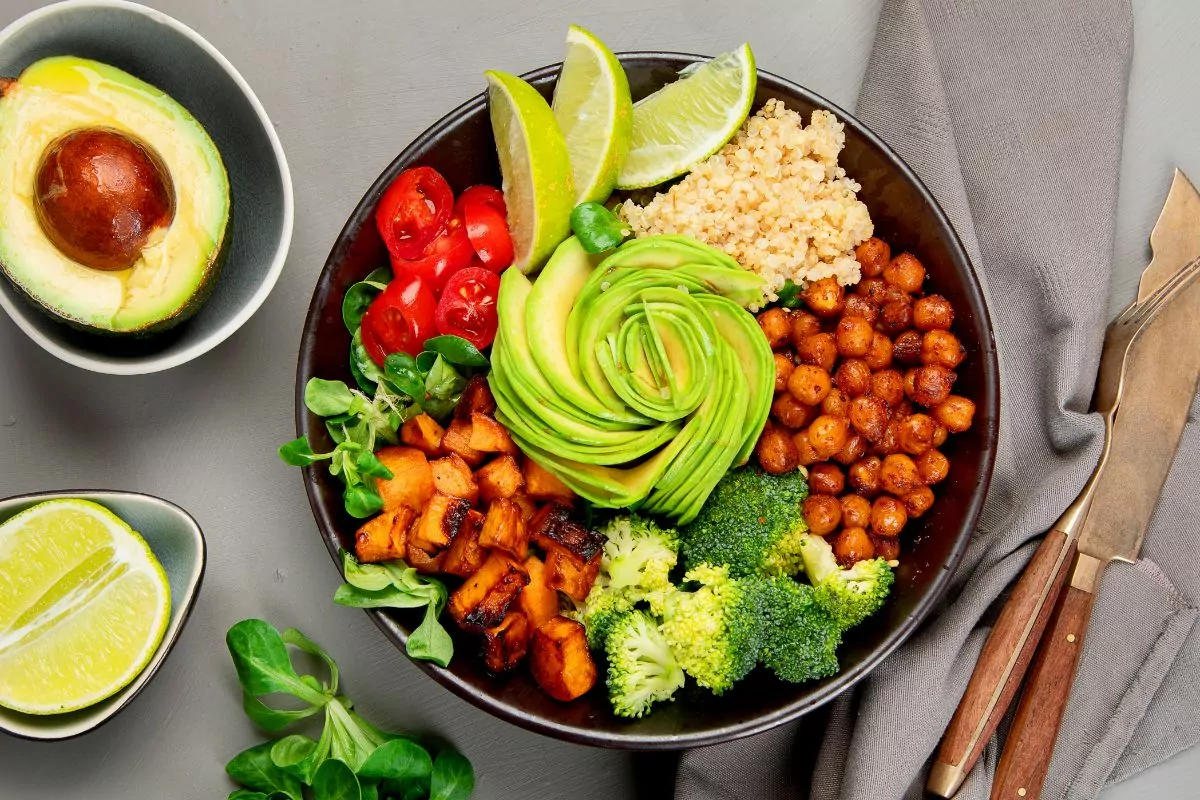Though most people think that a tomato is a vegetable, it’s actually a tasty and juicy fruit. Whether you use them in a tasty salad, sandwich, or curry, tomatoes can be used in lots of different recipes to give them some color and flavor.

Tomatoes can easily be forgotten about, so if you’ve kept them in the fridge for a while, they may exhibit signs of spoilage.
All types of tomatoes, including vine-ripe, beefsteak, or cherry tomatoes exhibit the same signs when they have gone bad.
We’ll cover the signs that a tomato has spoiled in this post, including the best storage methods to increase your tomato’s life span.
Signs That Tomatoes Have Spoiled
Whether you’re preparing salsa, curry, or pasta, you’ll need to ensure that your tomatoes are edible and haven’t spoiled before you start slicing them.
Here are the main signs that indicate a tomato has gone bad that you’ll need to look out for:
The Way They Look
One of the primary signs a tomato has spoiled is when gray, white, or green mold begins to form on them. They may even start to secrete liquid.
Mold is a fungus that can change the appearance and texture of food. The mold may seem like it just grows on the surface of a food, but it may have roots that extend deep into the product.
All forms of tomatoes, including sliced, diced, and whole tomatoes should be thrown away if they start to produce mold.
Texture And Consistency
If you’re trying to figure out if a tomato has spoiled, pick the fruit up and gently squeeze it.
Ripe tomatoes should have a light give to them. If the fruit is mushy or soft, as if it’s about to pop, the tomato has gone bad and needs to be disposed of.
Tomatoes can leak fluids which can easily go unnoticed. If you collect it in your hands and notice it leaking liquid, it will have spoiled and need to be thrown away.
Odor
If there aren’t any issues with a tomato’s appearance and texture, it’s likely to still be edible. However, if you’re still unsure, you should smell the fruit to double-check.
Fresh tomatoes will have a gentle, earth-like fragrance. Moldy, sour, or musty odors indicate the tomato has gone bad and needs to be disposed of.
This will be the case for all forms of tomatoes, whether they’re sliced, diced, or whole.
Advice On Storing Tomatoes
Here are some tips on storing tomatoes to prevent them from spoiling too quickly.
Pantry Or Countertop
Unripe Tomatoes
If your tomatoes are unripe, you can keep them in the pantry or on the counter at room temperature. Unripe tomatoes will be hard and have areas of green skin. Keeping them in these environments can help the tomatoes ripen.
Always remove the stems and stalks from the tomatoes to let them ripen naturally. Taking the stems off prevents moisture from leaving the fruit through the stem.
Leave the tomatoes with their ‘scar’ side facing downwards. This also prevents additional moisture and air from penetrating the fruit through the scar. This would lead to mold growth which makes the tomato spoil.
You can also store the unripe tomatoes in a breathable bag to make them ripen faster. A paper bag works well for this, but you can puncture some holes into a plastic bag if you don’t have this on hand.
This will keep any ethylene gas inside the bag, which the tomatoes absorb to make them ripen.
Ripe Tomatoes
It’s best to eat ripe tomatoes soon after purchasing them. If you need them for later, they are best kept in the refrigerator instead of the counter or pantry (next point).

Refrigerator
Unripe Tomatoes
Don’t store unripe tomatoes in the fridge, as these cold temperatures will delay their ripening process. Keep your unripe tomatoes in your pantry or on your countertop, as explained above.
Ripe Tomatoes
If you’re storing ripe tomatoes that you cannot use straight away, store them in the fridge. The colder temperatures will prevent the fruit from spoiling rapidly.
Some people advise transferring refrigerated tomatoes from the fridge to your countertop a day before they are needed. This will allow the tomatoes to retrieve any flavor and taste lost during refrigeration.
Freezer
Unripe Tomatoes
Do not store unripe tomatoes in the freezer, as the sub-zero temperatures will completely halt the ripening process. Always store unripe tomatoes in the pantry or on your countertop.
Ripe Tomatoes
If you have a large number of ripe tomatoes that aren’t needed for a long period, store them in the freezer for later use.
Begin by washing the fruit and gently patting it dry with a clean paper towel. Place all of the tomatoes on a baking sheet, ensuring that they are all separate, then place the sheet into your freezer.
After the fruit has frozen, move the frozen tomatoes to a different container or freezer bag.
If you’re going to freeze your tomatoes, bear in mind that freezing injures the plant cells. This means that the tomatoes will be soft after they are defrosted, so they’re best for cooking instead of eating fresh.
Are Wrinkled Tomatoes Bad To Eat?
Wrinkled tomatoes may look strange, but they aren’t bad to eat. The wrinkled appearance is a sign that the tomato’s skin is becoming tough as it gets older.
Wrinkling is also a dehydration symptom. The exterior surface of a tomato begins to wrinkle while the fluid within the fruit decreases. The tomatoes may appear unattractive, but they are generally safe to consume.
A wrinkled tomato will be safe to eat as long as you don’t notice any mold, rotting, or foul odors from the fruit.
Tips To Increase Tomatoes Life Span
Here is some advice to increase the shelf life of your tomatoes.
- Keep fully ripe tomatoes away from sunlight if they are out of the fridge at room temperature.
- Store ripe tomatoes with their stems facing upwards and make sure that they don’t touch one another.
- As mentioned above, keep ripe tomatoes in the refrigerator. The lack of air will make the tomatoes ripe at a slower rate, so they last a little longer.
- You can pickle tomatoes to preserve them, which involves storing the fruit in a salty, vinegary solution.
- Dehydrating tomatoes can also preserve them. This involves removing the water from the tomatoes, decreasing the fruit’s spoilage rate.
Final Thoughts
Signs that tomatoes have gone bad include mold, a squishy consistency, foul odor, and leaking fluid.
Wrinkled tomatoes don’t necessarily indicate spoiled tomatoes, as long as they don’t exhibit any other spoilage signs.
If you believe that your tomato has gone bad, always throw it away, as eating spoiled fruit can lead to sickness.
- How To Make A Paleo Detox Smoothie: Berry Cherry Green Edition - April 18, 2023
- How To Make Spicy Paleo Paprika And Thyme Veggie Fries - April 18, 2023
- 15 Mouthwatering Keto Apple Recipes You Need To Try Today - April 18, 2023









